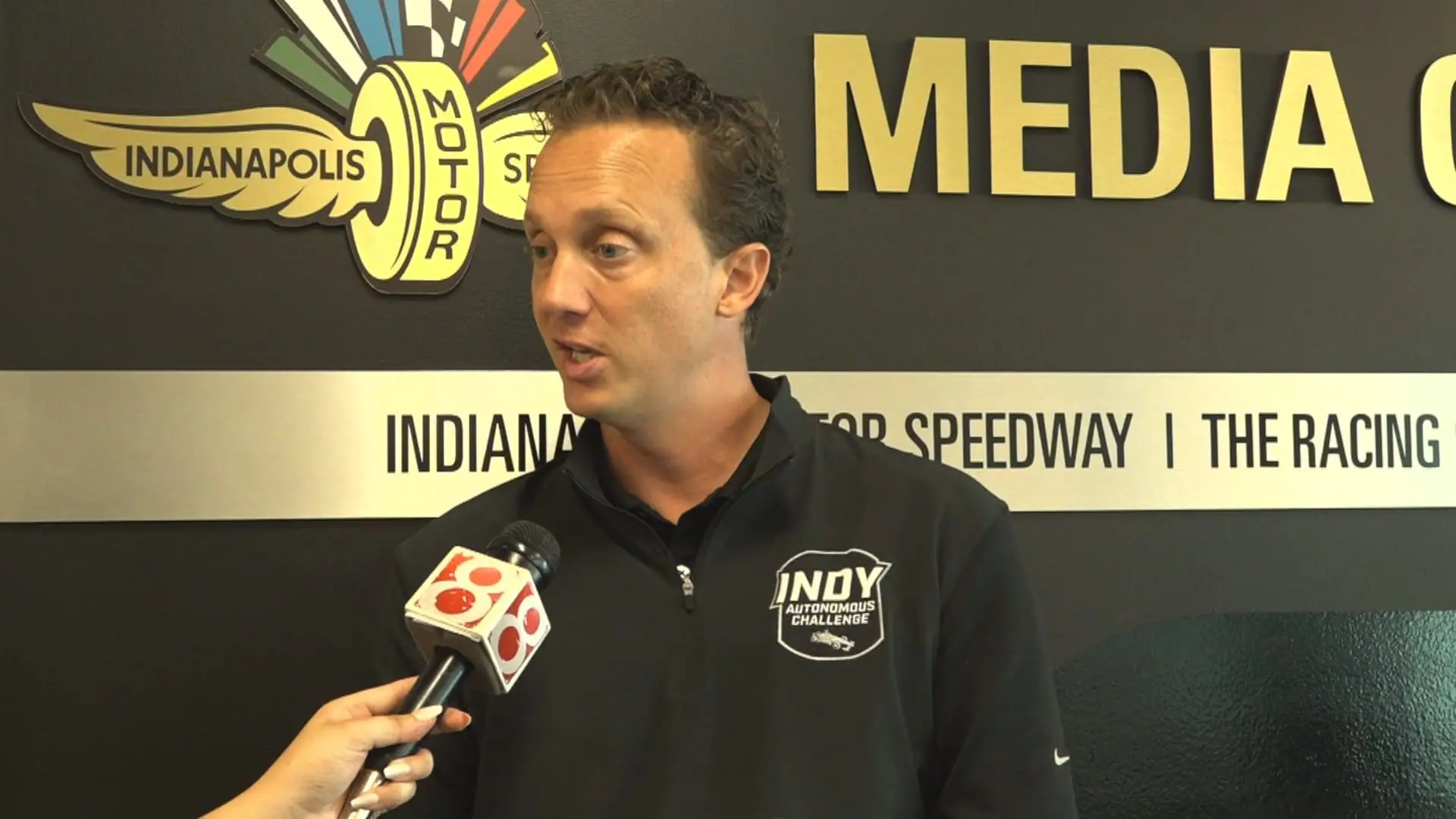Autonomous racing redefines the future
SPEEDWAY, Ind. (WISH) — The future of high-speed autonomous racing is taking the green flag at the Indianapolis Motor Speedway.
The heart of the Indy Autonomous Challenge event is the head-to-head autonomous racing competition, where 10 teams from 19 of the world’s top universities showcase their cutting-edge AI technology and drive innovation in autonomous mobility.
“We built a fleet of the world’s fastest autonomous race cars,” said Paul Mitchell, president and chairman of Indy Autonomous Challenge. “These are fully self-driving race cars, not remote control. Capable of driving up to 180 miles per hour. Then, we recruited university teams worldwide, including Indiana’s own Purdue and Indiana University, to develop AI drivers to pilot these cars in racing competitions.”
For the first time in three years, the Indy Autonomous Challenge is back at IMS for a race day with a crowd including about 1,500 students from across Indiana.
“We have, I think, five countries that are represented,” Mitchell said. “We have teams from Italy, Germany, Korea, and the U.S., and some representation from Canada. So, it’s an international activity. If you look at the students, they are mostly PhD students.”
These talented engineers are pushing autonomous tace cars to the limit while setting new standards in high-speed autonomy. Each vehicle costs more than $1 million.
“There will be a lot of impact on the driving and car industry,” said Lan Tao Liu, associate professor at the Luddy School of Informatics, Computing, and Engineering. “First, it will help people drive. The technology we are developing is comparable to the self-driving technology that car companies have. The difference is that our car is running at high speed, more than 192 miles per hour.”
This initiative is designed to ignite a passion for the next generation of technological engineers.
“Some of our best teams are reaching almost equal lap times,” Mitchell said. “That is 90% of the fastest human-driven lap times with the same cars here at IMS, so that’s pretty amazing.”
It’s more than just a race; it’s a glimpse into the future of autonomous technology. “It’s a long day of racing! We hope to achieve our best and party after when we succeed,” said Reddy Charan Pulivendula, a software engineer at IU.



